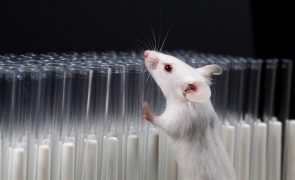Background
The avermectins compose a class of polycyclic lactones that are used to treat parasitic worms and insect pests. They are naturally occurring compounds generated in a fermentation process by a soil actinomycete Streptomyces avermitilis. During the production process of biopharmaceuticals, a residual host cell DNA contamination can be introduced. Production companies usually include purification procedures to remove these contaminants; however, it is still necessary to verify the amount of residual host DNA present in intermediate and final product samples to comply with quality control assessment.
Customer need
GENERI BIOTECH was approached by an industrial customer to check for traces of Streptomyces avermitilis production strain DNA in 3 different production batches of avermectin. The main challenge was to develop a S. avermitilis-specific method and a calibration curve using the reference strain gDNA, which is not commercially available.
The solution
Building on its expertise in host cell DNA analysis, GENERI BIOTECH developed and validated a specific method for determination of residual DNA in 3 batches of Avermectin based on quantitative PCR assay and using gDNA isolate from S. avermitilis BCCO-10-0959 culture collection as a standard. In parallel, total DNA amount was verified by nonspecific qPCR assay using degenerated oligo primers (DOPs). In compliance with the International Conference of Harmonization (ICH) guidelines, the qPCR assays were validated for precision, accuracy, detection and quantitation limits, linearity and specificity. The analysis concluded that in all three tested avermectin batch extracts there was no presence of total or S. avermitillis – specific DNA, a favorable result which was far below the acceptance criteria of < 0.3 %.
Customer benefit
- fast and cost-efficient development and validation of the method in GMP-like mode
- a unique range of comprehensive solutions under one roof: from DNA isolation, specific qPCR assay development, off-the shelf validated qPCR assay, to routine testing
- highly sensitive analysis of the samples
Published by: Kateřina Dolečková, Ph.D.
August 2019
E-mail

 Residual DNA tests
Residual DNA tests 

